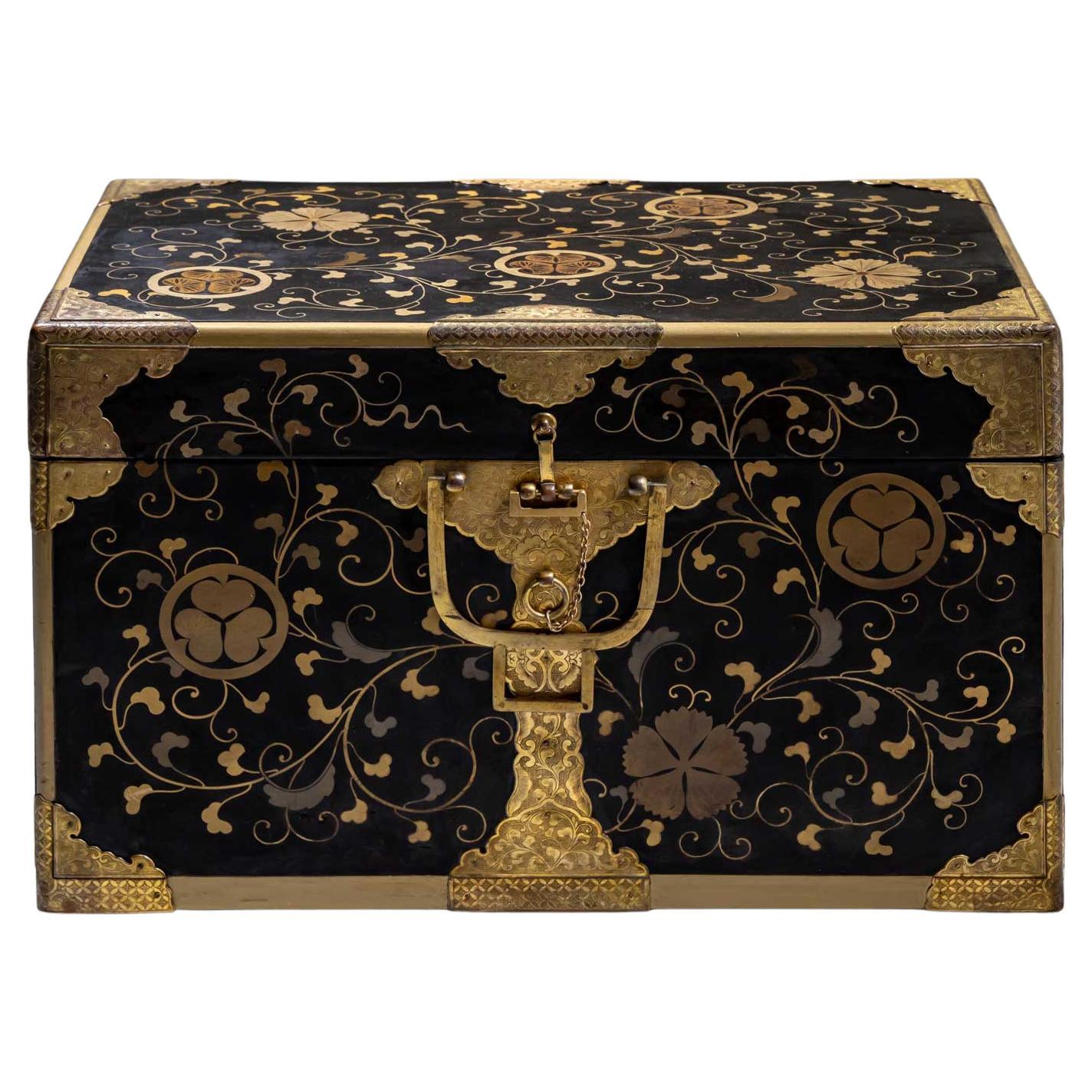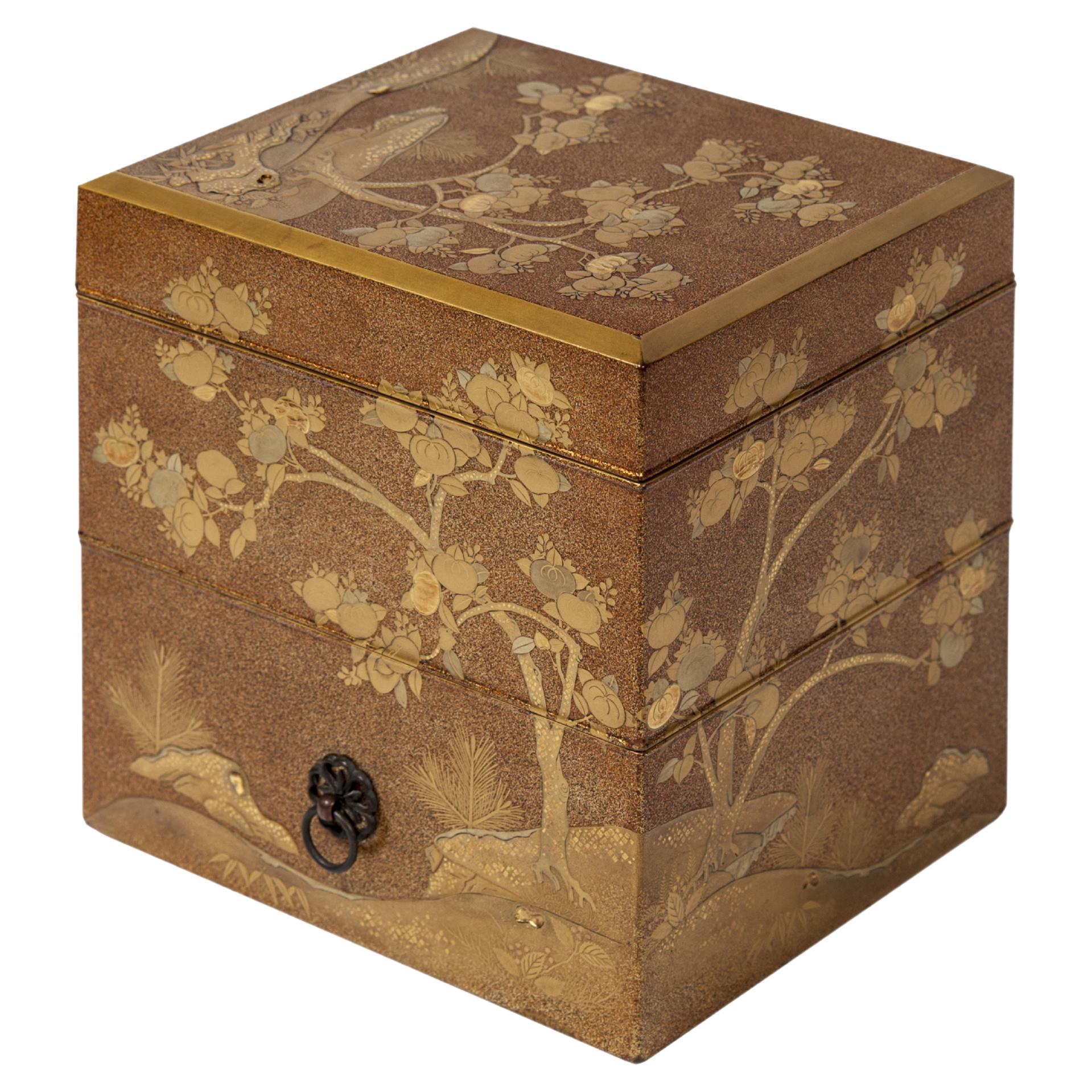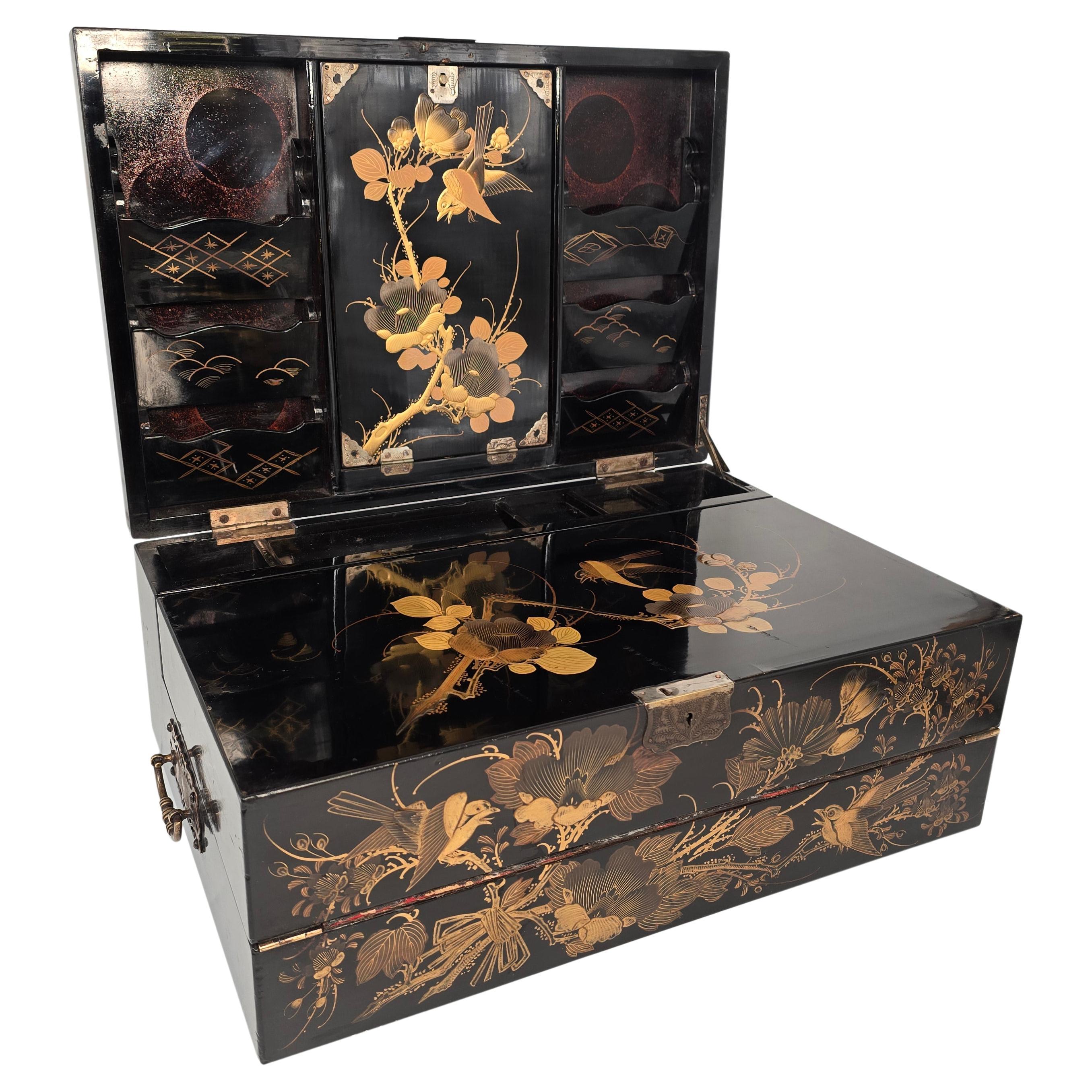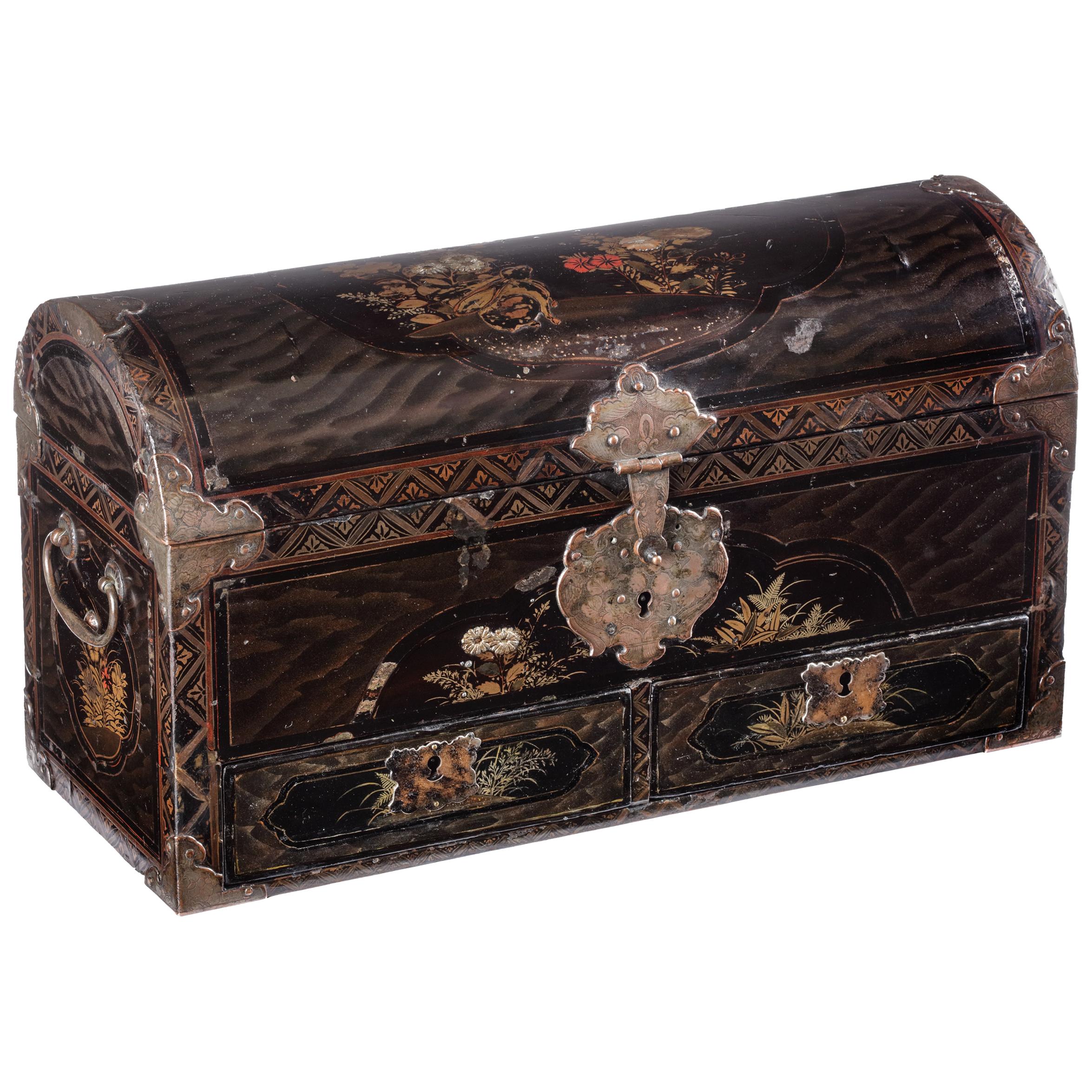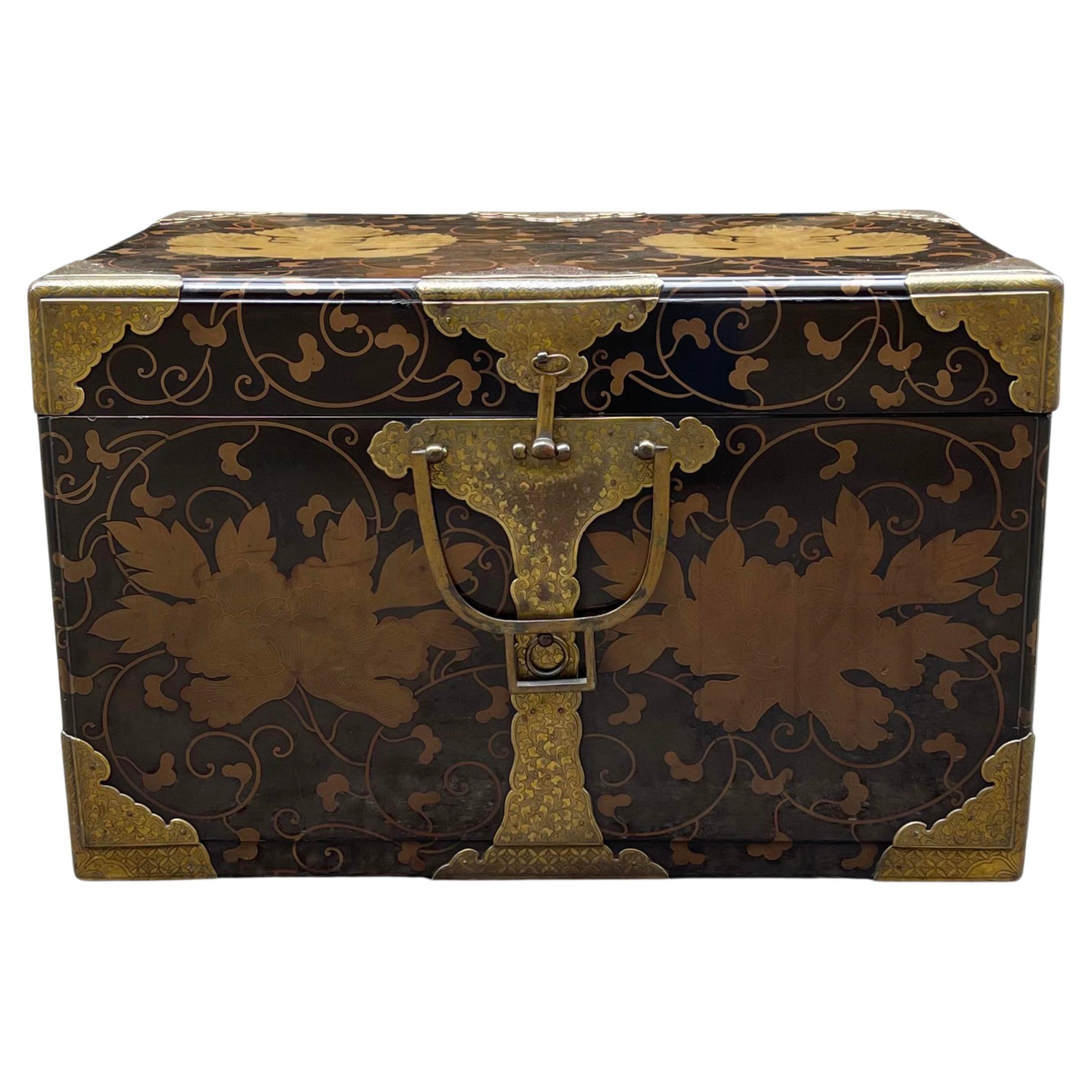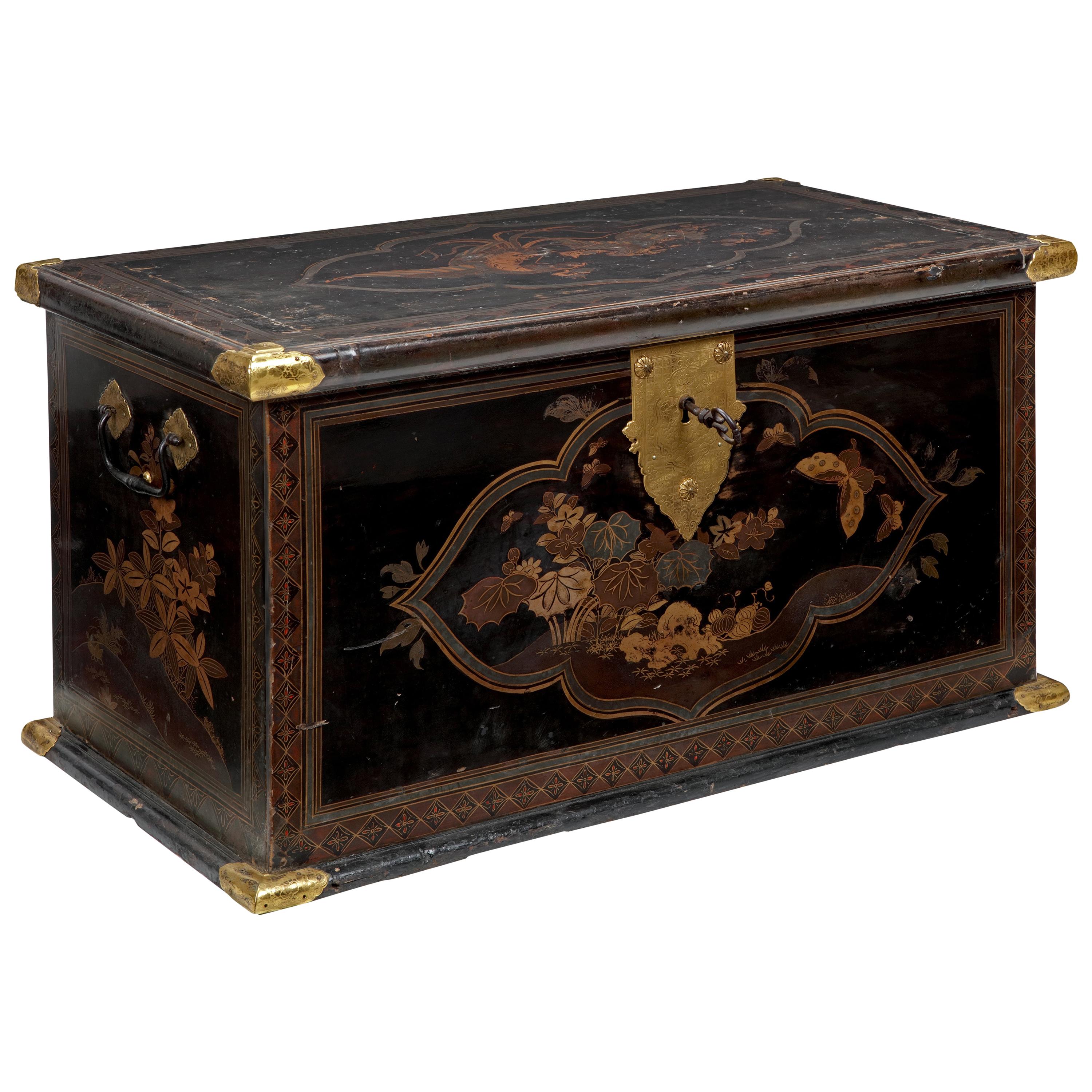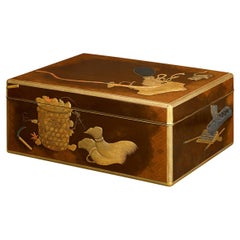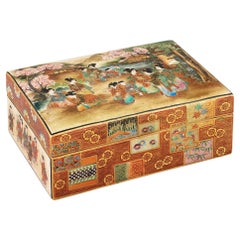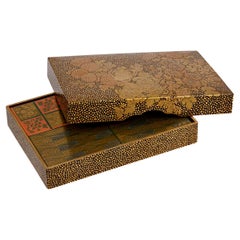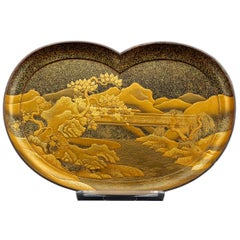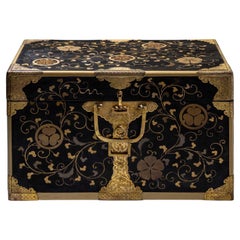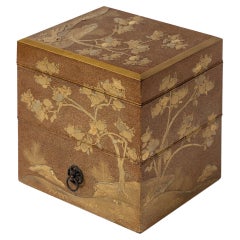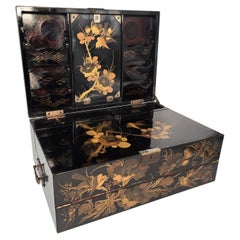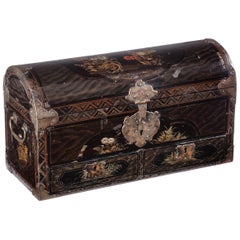Items Similar to Edo-Period Lacquerware Chest
Want more images or videos?
Request additional images or videos from the seller
1 of 6
Edo-Period Lacquerware Chest
$4,450
£3,404.60
€3,893.69
CA$6,336.41
A$6,863.10
CHF 3,635
MX$83,033.18
NOK 45,697.57
SEK 42,599.84
DKK 29,079.86
About the Item
Edo-Period Lacquerware Chest
19th-century
This exquisite chest, inspired by Hasami-Bako travel trunks, is a striking example of Japanese lacquerware. The hiramaki-e technique—applied gold lacquer—adorns its surface with intricate foliage and vine motifs, while finely engraved gilt metal fittings, decorated with nanako patterns, embellish the corners and clasps. The lid and sides feature elegant floral designs, incorporating a mon, the stylized crest of a noble family.
The interior, remarkably well-preserved, includes a black lacquer tray with a gilded rim and retains its original paper lining. These miniature chests served both as decorative objects and as ceremonial ornaments during Hina Matsuri (the Doll Festival).
The creation of a lacquer box of this caliber was an arduous, time-intensive process, as Japanese lacquerwork is among the most meticulous and labor-intensive art forms in the world. The extraordinary level of detail in this piece speaks to the mastery of its maker and the enduring legacy of Japan’s refined craftsmanship.
3 1/2“ high x 5 1/2” wide x 3 3/4“ deep
- Dimensions:Height: 3.5 in (8.89 cm)Width: 5.5 in (13.97 cm)Depth: 3.75 in (9.53 cm)
- Style:Edo (Of the Period)
- Materials and Techniques:
- Place of Origin:
- Period:
- Date of Manufacture:19th Century
- Condition:
- Seller Location:New Orleans, LA
- Reference Number:Seller: 32-05201stDibs: LU891144458322
About the Seller
5.0
Recognized Seller
These prestigious sellers are industry leaders and represent the highest echelon for item quality and design.
Established in 1912
1stDibs seller since 2010
114 sales on 1stDibs
Typical response time: 4 hours
- ShippingRetrieving quote...Shipping from: New Orleans, LA
- Return Policy
More From This Seller
View AllJapanese Lacquer Box
Located in New Orleans, LA
This exquisite Meiji-period lacquer document box known as a ryoshibako showcases the meticulous artistry of maki-e, a technique of raised lacquer decoration. Adorned with gold and vi...
Category
Antique 19th Century Asian Meiji Lacquer
Materials
Gold
$39,850
Ryozan Satsuma Trinket Box
Located in New Orleans, LA
This extraordinary Satsuma box is signed on the underside by the artist Ryozan for the manufacturer Yasuda. Okamoto Ryozan is widely regarded as the finest and most famous Satsuma ar...
Category
Antique 19th Century Japanese Meiji Decorative Boxes
Materials
Earthenware
Gold Lacquer Incense Box
Located in New Orleans, LA
A Gold Lacquer Kōbako (Incense Box)
Edo Period (1615–1868), Circa 1850
This exquisite gold lacquer kōbako (incense box) exemplifies the refined craftsmans...
Category
Antique 19th Century Japanese Edo Decorative Boxes
Materials
Gold, Silver, Gold Leaf
$9,850
Japanese Lacquer Tray
Located in New Orleans, LA
As beautiful as it is practical, this Japanese Meiji-period lacquered tray is distinguished by its exceptional craftsmanship. It exhibits a phenomenal artistry as the entire tray is ...
Category
Early 20th Century Japanese Meiji Lacquer
Materials
Lacquer
$8,850
Japanese Lacquer and Gold Tray
Located in New Orleans, LA
This Meiji-period lacquer tray represents the mastery of Japanese craftsmen in the art of lacquer work. Precious materials are precisely inlaid in the lacquer base, creating a highly...
Category
Antique Late 19th Century Asian Meiji Lacquer
Materials
Gold
Japanese Meiji Lacquer Writing Set
Located in New Orleans, LA
This remarkable Japanese portable writing set contains the instruments of sublime artistic expression. Also known as a yatate, this Meiji-period set i...
Category
Antique 19th Century Japanese Meiji Scholar's Objects
Materials
Stone
You May Also Like
Japanese Lacquer Chest, Edo Period
Located in Greding, DE
Small rectangular Japanese chest with gold lacquer decoration in the form of leaf tendrils. The chest is decorated with cut-out and ornamentally engraved fittings on the corners and ...
Category
Antique 18th Century Japanese Edo Decorative Boxes
Materials
Brass
Japanese Lacquered Tebako 'Box'
Located in PARIS, FR
Tebako box with three compartments in golden and nashi-ji lacquer, decorated with golden, red, and kirigane lacquer, golden persimmon tree leaves, among rocks. The compartments are of increasing size from the top. The decoration is in continuity.
Persimmon has been cultivated in southern China for more than 2500 years and is believed to have been introduced to Japan in the 8th century. The veneer is a tree with very hard wood, similar to ebony. According to a legend, one specimen survived the atomic bombing of Nagasaki on August 9, 1945, close to the epicenter. It is therefore in Japan a symbol of strength and longevity. It is also the national fruit of the country. It is eaten as a traditional dish during New Year's Day celebrations.
Tebako literally means "portable box...
Category
Antique 1860s Japanese Lacquer
Materials
Lacquer
A large 19th century Japanese lacquer writing box with a secret compartment
Located in Central England, GB
This remarkable and highly decorative Japanese export large writing box is a rare high quality example with a complicated and intricate interior.
The box is in very good condition c...
Category
Antique Late 19th Century Japanese Other Decorative Boxes
Materials
Lacquer
Fine Japanese Namban Lacquer Jewelry Casket, 17th Century
Located in Amsterdam, NL
Japanese Namban lacquer transition-style coffer with two drawers
Kyoto/Nagasaki, circa 1650
The cartouches with gilt and red decorations of leaves...
Category
Antique 17th Century Japanese Edo Lacquer
Materials
Cypress
Japanese Lacquered and Gold Leaf Storage Trunk (Nagamochi)
Located in CA, CA
A fine lacquered and gold leaf Nagamochi dating from the late 18th century or early 19th century.
The exterior of the trunk and its gilded metal fittings are decorated with a folia...
Category
Antique Late 18th Century Japanese Edo Decorative Boxes
Materials
Gold Leaf
Large Royal Early 17th Century Japanese Lacquer Chest with Gilt-Bronze Mounts
Located in Amsterdam, NL
A large Japanese transitional lacquer chest with gilt-metal mounts
Edo period, early 17th century
The rectangular chest with flat hinged lid decorated in gold, silver, and red ...
Category
Antique Early 17th Century Japanese Blanket Chests
Materials
Bronze
More Ways To Browse
Edo Period Chest
Hina Doll
Hasami Bako
French Sewing Box
Hand Carved Indian Wood Tray
Horn Veneer
Japanese Metal Box
Leather Writing Box
Maitland Smith Marble Box
Persian Inlaid
Pietra Dura Box
Primitive Wood Box
Russian Hand Painted Lacquer Box
Secret Compartment Furniture
Staffordshire Box
Tole Box
Tortoise Shell Victorian
19th Century Letter Box
